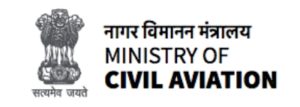To address various challenges for safety and expansion of unmanned aircraft systems (UAS) in India, a task-force constituted by the Union government has proposed creation of “Drone Corridor” and “Droneports” in the country. Accordingly, the Ministry of Civil Aviation constituted task-force has recommended key principles and ideas in — Drone Ecosystem Policy Roadmap — that will guide the drafting of ‘Civil Aviation Regulations’ (CAR) 2.0.
Currently, a basic framework for regulations in the area have been established under the “DigitalSky Platform” in CAR 1.0 which took effect from December 1, 2018. The roadmap was released at the Global Aviation Summit 2019 being held here from January 15-16.
One of the key recommendation of the roadmap is a “Drone Corridor: A segregated airspace defined by the appropriate authorities in consultation with the airspace designers to keep commercial UAS operations out of the non-segregated airspace in which manned aircrafts operate.”
Presently, CAR 1.0 allows UAS operations to be carried out in both segregated and unsegregated airspace of up to 400 ft. above the ground level and within the visual line of sight, subject to conditions.
“However, for expansion and penetration of UAS-based commercial services and to enhance the capabilities of UAS, it is important that the operational airspace for UAS is expanded to allow beyond visual line of sight and above the current limit of 400 ft. operations in segregated airspace corridors,” the report proposed.
“Till such time the UAS for commercial use are not certified as safe to fly alongside manned aircraft, they should be kept away from airspace in which manned aircrafts operate. Alternatively, Drone Corridor … should be provided for UAS operations. The Corridors can be defined by the Member, DigitalSky in consultation with the Drone Directorate to include these segregated airspace in which UAS may operate without the need to communicate with the Air Traffic Controller.”
Besides, the roadmap proposes creation of Droneports as designated areas dedicated to facilitate take-off and landing of the UAS.
“However, overtime their capabilities may be enhanced to function as distribution centers (or cargo holds), battery charging stations and or any other appropriate use. Licensing of such ports may be granted by the concerned authorities upon meeting the prescribed technical requirements,” the report said.
As per the roadmap, 100 per cent Foreign Direct Investment (FDI) should be permitted under the automatic route in UAS and RPAS-based commercial civil aviation services, subject to the financial threshold applicable to non-scheduled air transport operators.
Source: Business Standard

